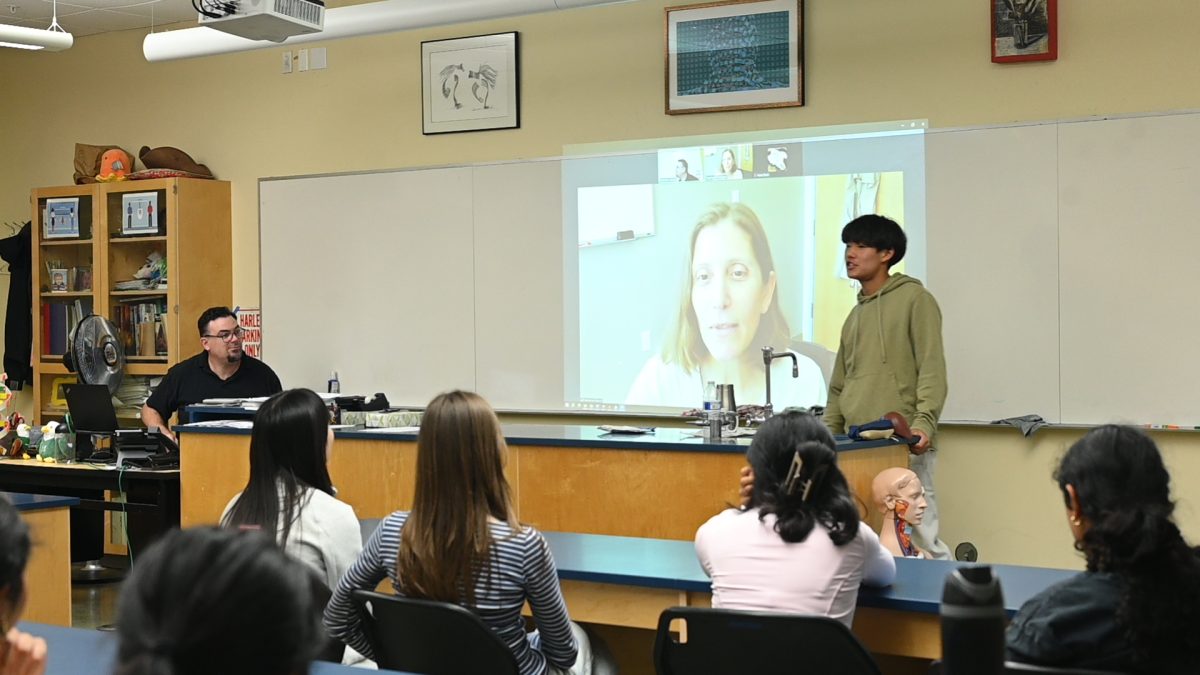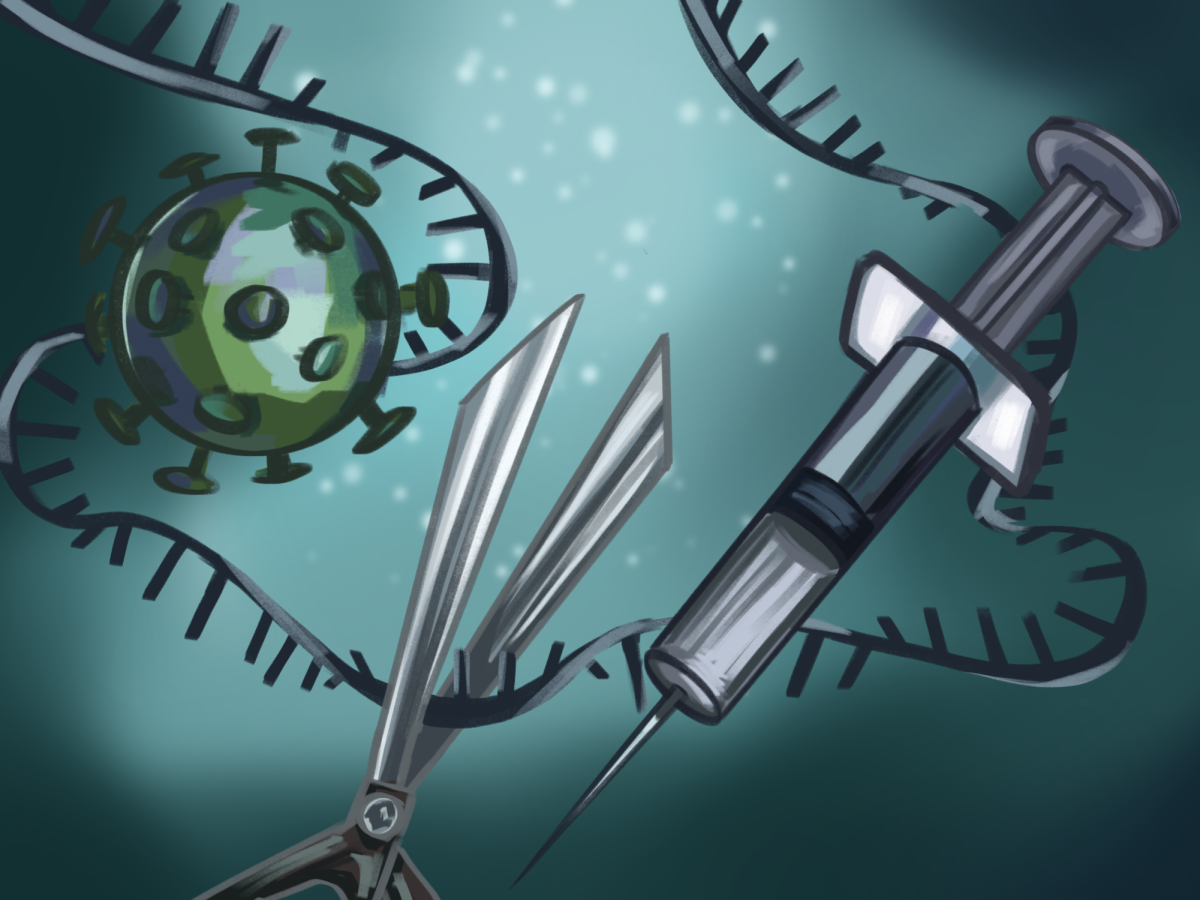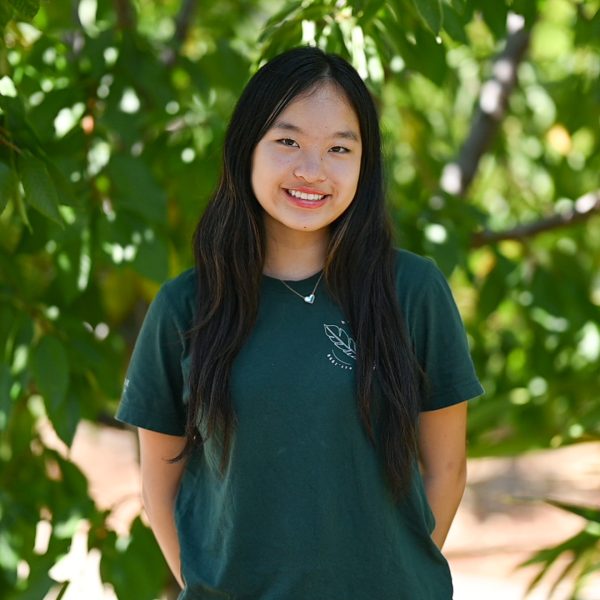Honors and AP Biology students created yeast spheres to observe the catalase enzyme in action on Oct. 18.
They experimented with different concentrations and temperatures of a substrate solution to uncover the factors that influence enzymatic activity. Students first combined a yeast solution with sodium agitate to encapsulate the yeast in a gel-like material. Each group used syringes to create around 60 uniform yeast spheres by injecting drops of the solution into calcium lactate.
“We got to have hands-on experience to form the yeast structures,” AP Biology student Syna Sharma (11) said. “It was cool to see how the yeast reacted with the different concentrations of substrate and to test that ourselves.”
By timing how long it took for a yeast sphere to rise to the top of a hydrogen peroxide solution, students measured the effect of hydrogen peroxide concentration on the rate of the reaction. They dropped the yeast spheres individually into solutions of 0.3%, 0.6%, 1.5% and 3% hydrogen peroxide, which floated because of the production of oxygen gas.
“I love that this lab let students see reactions in the body happen, which we don’t often do with our biochemical experiments,” AP Biology teacher Matthew Harley said. “It was more visual because they could see hydrogen peroxide break down, and also it was fun to see them making spheres and bringing out their inner child with this lab.”
Students also tested the effect of temperature on the rate of the reaction by using heated, chilled and room temperature hydrogen peroxide solutions and timing the reaction rate.
“Even though this was a roundabout way to learn about enzymes since we already learned the principles in chemistry, it was great to see the reaction and the bubbles,” AP Biology student Timothy Deng (11) said. “If all classes were lectures all the time, that would be quite dull. It helped me learn in a way that I wouldn’t have if I was just listening since I was able to see the biological element in real life.”


















![“[Building nerf blasters] became this outlet of creativity for me that hasn't been matched by anything else. The process [of] making a build complete to your desire is such a painstakingly difficult process, but I've had to learn from [the skills needed from] soldering to proper painting. There's so many different options for everything, if you think about it, it exists. The best part is [that] if it doesn't exist, you can build it yourself," Ishaan Parate said.](https://harkeraquila.com/wp-content/uploads/2022/08/DSC_8149-900x604.jpg)




![“When I came into high school, I was ready to be a follower. But DECA was a game changer for me. It helped me overcome my fear of public speaking, and it's played such a major role in who I've become today. To be able to successfully lead a chapter of 150 students, an officer team and be one of the upperclassmen I once really admired is something I'm [really] proud of,” Anvitha Tummala ('21) said.](https://harkeraquila.com/wp-content/uploads/2021/07/Screen-Shot-2021-07-25-at-9.50.05-AM-900x594.png)







![“I think getting up in the morning and having a sense of purpose [is exciting]. I think without a certain amount of drive, life is kind of obsolete and mundane, and I think having that every single day is what makes each day unique and kind of makes life exciting,” Neymika Jain (12) said.](https://harkeraquila.com/wp-content/uploads/2017/06/Screen-Shot-2017-06-03-at-4.54.16-PM.png)








![“My slogan is ‘slow feet, don’t eat, and I’m hungry.’ You need to run fast to get where you are–you aren't going to get those championships if you aren't fast,” Angel Cervantes (12) said. “I want to do well in school on my tests and in track and win championships for my team. I live by that, [and] I can do that anywhere: in the classroom or on the field.”](https://harkeraquila.com/wp-content/uploads/2018/06/DSC5146-900x601.jpg)
![“[Volleyball has] taught me how to fall correctly, and another thing it taught is that you don’t have to be the best at something to be good at it. If you just hit the ball in a smart way, then it still scores points and you’re good at it. You could be a background player and still make a much bigger impact on the team than you would think,” Anya Gert (’20) said.](https://harkeraquila.com/wp-content/uploads/2020/06/AnnaGert_JinTuan_HoHPhotoEdited-600x900.jpeg)

![“I'm not nearly there yet, but [my confidence has] definitely been getting better since I was pretty shy and timid coming into Harker my freshman year. I know that there's a lot of people that are really confident in what they do, and I really admire them. Everyone's so driven and that has really pushed me to kind of try to find my own place in high school and be more confident,” Alyssa Huang (’20) said.](https://harkeraquila.com/wp-content/uploads/2020/06/AlyssaHuang_EmilyChen_HoHPhoto-900x749.jpeg)











